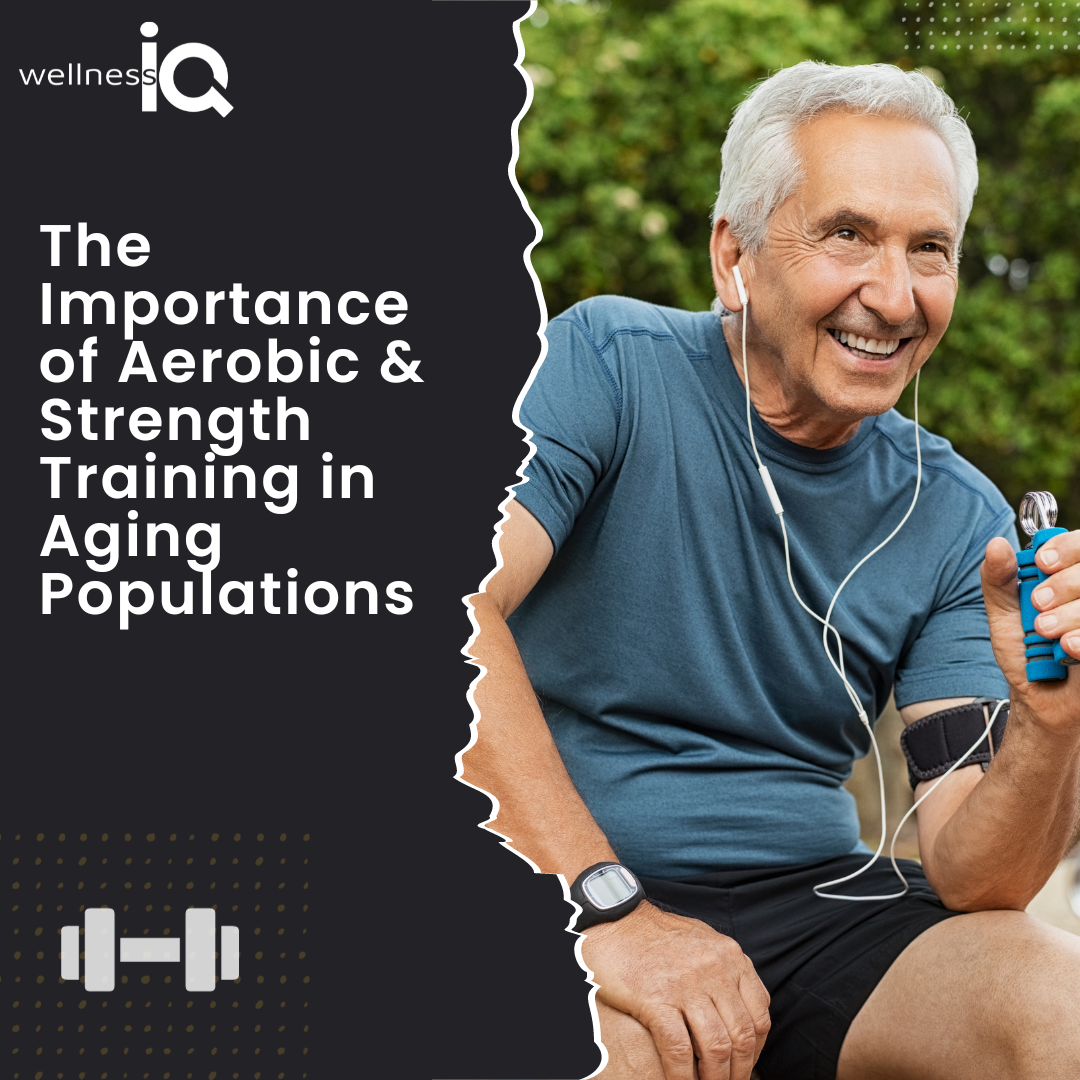
The Importance of Aerobic and Strength Training in Aging Populations
Written By: Mike Poulsen, Sales Executive
Sweat dripped down my forehead as I shielded my eyes from the summer sunset. I just wrapped up leading a brutal outdoor personal training session with one of my more ambitious clients, Bob. I asked him if he wanted a ride home since he ran to the park as his warmup and assumed he was spent after our session, but he insisted he go back the way he came—by foot. I was in my late 20’s at the time and in what I considered amazing shape but couldn’t fathom running home after an hour of metabolic conditioning in the heat! As Bob began to head home, he looked over at me and exclaimed, “Death comes for us all, but when he comes for me, he better be wearing running shoes”. Bob always had a fierce attitude towards our daily workout plan. He never skipped a set and performed every repetition like his life depended on it and in a lot of ways, it did. You see, Bob was nearly 70 years old and though his highly-above-average fitness level, for his demographic, he didn’t want the inconveniences of aging to slow him down. This man climbed Kilimanjaro twice for fun. He understood that if he wanted to enjoy doing the things he truly loved after retirement, he needed to remain active. Though I would certainly consider Bob an outlier for his demographic in my 15 years of personal training experience, research shows that strength training is important for all adults, regardless of age. In fact, a modest investment of daily physical activity equivalent to a brisk walk can generate significant health benefits!
The Heart (and Lungs) of the Matter
Being active throughout our lifespan helps keep an array of diseases at bay, makes us better at completing everyday activities, slows muscle loss associated with aging, and improves our cognitive function. As we grow older, our heart and lungs slow down and become less efficient, especially if we’re sedentary. If we aren’t challenging these organs through physical activity, they must work harder to accomplish the same result as they did when we were younger (Murray and Kenney, 206). According to the American Lung Association, your lungs mature by 20-25 years old and start to decline after age 35. Left unaddressed, these changes can result in feelings of tiredness and shortness of breath. We also open ourselves up to increased risk of infections like pneumonia (Association, 2018). The great news is we can slow down this process and improve our aerobic capacity through regular exercise. You don’t necessarily need to train in the extreme matter, like our friend Bob to see results—consistency and choosing activities you enjoy will be the key to your success! Here are some examples:
- Start small with short walks around the block and increase your distance as you start to build stamina. Bring a friend, the dog, or a family member for additional support!
- Consider biking, swimming, and elliptical training to add variety.
- Join a group fitness class appropriate for your skill level to meet new people who share a common goal and help hold you accountable.
- Water Aerobics is a fantastic option to get your heart rate up without impacting your joints too much.
- Aim for at least 150 minutes of moderate physical activity a week for best results, though you will see benefits with less.
- Getting regular physical activity keeps your mind sharp, improves memory, and acts as a natural anti-depressant!
Strong at Any Age
Strength training later in life doesn’t just maintain or improve muscle mass, it also helps with joint mobility. Everyday activities like getting out of chairs, walking, and taking the stairs can become more difficult as we age. These difficulties can lead to higher risk of falls, nursing home admission, and chronic diseases. Unlike aerobic training above, strength training (also known as resistance training) can be achieved by simply contracting your muscles to move objects against the pull of gravity (National institutes of Health, 2022). Strength training is more than just lifting free-weights! Try incorporating machines, resistance bands, medicine balls, and yoga to name a few to keep things interesting. Below are some tips to guide you towards strength-training success!
- Set a goal to strength train at least twice a week, include all muscle groups.
- Start with lighter resistance until you master the movement with perfect form.
- Your posture when performing movements is important. Standing in front of a mirror may be helpful to maintain good form.
- Aim for 12-15 repetitions of each exercise in the beginning, progressing to 8-12 repetitions with more resistance as you become more proficient in the movements.
- Complete 1-3 sets, resting 30-90 seconds between rounds.
- Strength training combined with aerobic activity is more effective than aerobic activity alone when it comes to preventing obesity as we age.
- Always consult your doctor before starting a new fitness program.
References:
American Lung Association (2018, April 24). Your aging lungs. American Lung Association. https://www.lung.org/blog/your-aging-lungs
Murray, R. and Kenney, W.L. (2016). Practical Guide to Exercise Physiology. Champaign, Ill.: Human Kinetics.
U.S. Department of Health and Human Services. (2022, June 30). How can strength training build healthier bodies as we age? National Institute on Aging. https://www.nia.nih.gov/news/how-can-strength-training-build-healthier-bodies-we-age
